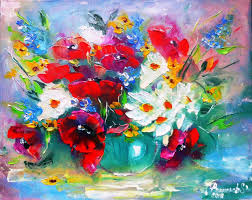HISTORY OF THE ORIGIN AND DEVELOPMENT OF STAINED-GLASS ART (part 1)
 When sunlight penetrates through the high openings of windows, stained glass paintings, stained glass patterns seem to flash, light up in bright color, begin to glow, transforming the interior, filling it with a fantastic play of colored glass.
When sunlight penetrates through the high openings of windows, stained glass paintings, stained glass patterns seem to flash, light up in bright color, begin to glow, transforming the interior, filling it with a fantastic play of colored glass.
Stained-glass window is one of the most remarkable phenomena of monumental art. He got his current name from the French word “vitrage” – glass. Until recently, this term was understood as an ornamental or plot decorative composition (in a window, door, partition, in the form of an independent panel) made of glass or other material that transmits light.
According to scientists, the simplest stained-glass windows existed already in Ancient Egypt from the 2nd millennium BC. and in ancient Rome – from the 1st millennium A.D. Continue reading
HISTORY OF THE ORIGIN AND DEVELOPMENT OF MONUMENTAL PAINTING (part 2)
 The term “fresco” came to Russia from Italy no earlier than the 18th century. This can be judged by the fact that even in the XVI-XVII centuries it was not found in Russian documents, and they wrote about this nature of work in annals, charters, and decrees: “a wall letter in raw gesso.” The term “wall writing” meant all paintings on architectural surfaces made using any technique, whether it was painted on raw gesso, on an emulsion binder or adhesive.
The term “fresco” came to Russia from Italy no earlier than the 18th century. This can be judged by the fact that even in the XVI-XVII centuries it was not found in Russian documents, and they wrote about this nature of work in annals, charters, and decrees: “a wall letter in raw gesso.” The term “wall writing” meant all paintings on architectural surfaces made using any technique, whether it was painted on raw gesso, on an emulsion binder or adhesive.
The mural was widespread in past eras. It is assumed that she was known in Ancient Greece, she wrote in ancient Rome, Byzantium, in Russia X-XII centuries. Numerous murals are made in medieval Europe.
Significant and outstanding works are created in this technique. Continue reading
HISTORY OF THE ORIGIN AND DEVELOPMENT OF MONUMENTAL PAINTING (part 1)
 FRESCO
FRESCO
It is customary to divide the painting into easel and monumental. To easel painting is one that is made with oil paints on canvas, cardboard or other solid material. As a rule, it has not so impressive dimensions, is performed on an easel and is able to wander around exhibitions, museums, and the interiors of owners. Monumental painting is another matter. It is rigidly attached to the architectural surface, often has gigantic dimensions and the technology of execution has its own characteristics. There are many diverse techniques of monumental painting, but we intend to tell you only about three of them. This is a fresco, mosaic and stained glass. Continue reading
HISTORY OF ORIGIN AND DEVELOPMENT OF ART OF ENAMEL (part 2)
 The Egyptian manner of performing jewelry was developed in the post-Dynastic period beyond the borders of Egypt. Ornaments from the burial of the wife of Pharaoh Amenemkhet from Meroe (Nubia) show that here as early as the 1st century AD the Egyptian technique of fixing the inserts has been preserved, albeit in a rougher form. In these decorations, instead of inserts, there are real molten enamels of the classic Egyptian palette. When making the found gold jewelry, the master lost sight of the fact that the volumetric shrinkage of molten enamel should be leveled with additional application and firing. The enamel plunged into the cells and resembles a modern cloisonne, rather than notched, enamel, carefully polished in one plane. Continue reading
The Egyptian manner of performing jewelry was developed in the post-Dynastic period beyond the borders of Egypt. Ornaments from the burial of the wife of Pharaoh Amenemkhet from Meroe (Nubia) show that here as early as the 1st century AD the Egyptian technique of fixing the inserts has been preserved, albeit in a rougher form. In these decorations, instead of inserts, there are real molten enamels of the classic Egyptian palette. When making the found gold jewelry, the master lost sight of the fact that the volumetric shrinkage of molten enamel should be leveled with additional application and firing. The enamel plunged into the cells and resembles a modern cloisonne, rather than notched, enamel, carefully polished in one plane. Continue reading
HISTORY OF ORIGIN AND DEVELOPMENT OF ART OF ENAMEL (part 1)
 The history of enamel art, as well as jewelry, has more than three thousand years of history. When and where was the first enameling, i.e. colored glass in the molten state is connected to metal, it is impossible to determine exactly. Higgins in the description of Greek and Roman jewelry mentions the earliest works with enamel.
The history of enamel art, as well as jewelry, has more than three thousand years of history. When and where was the first enameling, i.e. colored glass in the molten state is connected to metal, it is impossible to determine exactly. Higgins in the description of Greek and Roman jewelry mentions the earliest works with enamel.
For example, in Mykonos (Greece), metal objects were found with soldered glass plates painted in blue, made between 1425 and 1300. BC. These items can be considered the oldest of the known finds. From the 6th century BC e. Greeks systematically deposited enamel on gold jewelry. Continue reading




